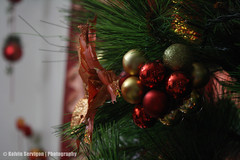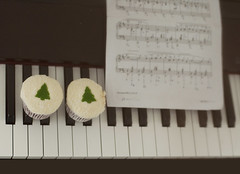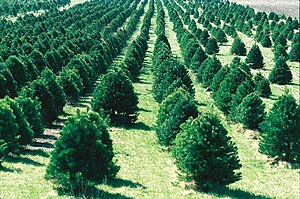The Christmas season is in full swing, and we here at LGBG wanted to weigh in with some helpful tips in planning a really green Christmas. We feel that it is important to address the topic of a green Christmas because so often in this age of mass consumerism, we witness the holiday season losing its true meaning and getting buried under an avalanche of all types of excess, ranging from uncontrolled spending, overindulgence in food and beverages, and even careless disregard of established principles of green living habits, thereby sabotaging all the advances we previously made and all in the name of a happy holiday. These negative actions can lead to feelings of guilt, remorse, anger and depression once the holidays are over.
The first step in planning a really green Christmas is to ignore the lure of television, Internet and email advertising that encourage extravagance at all costs and entices us to run out to the malls or to log on and get the deal of the day. After all, Christmastime is a monumental merchandising opportunity, and retail businesses want to secure their “numbers” as early in the season as possible. To that end, it is important that we resist the urge to feel that we are letting the best deal get away or to buy impulsively without doing the necessary homework to really find the best buy.
A great way to guarantee an affordable and really green Christmas is to start with a realistic budget to make sure you know exactly how much money is available for holiday spending. This budget should include everything for the holiday, such as gifts, decorations, meals, activities and travel expenses, particularly if a trip is part of the holiday plan. Make sure that all regular financial obligations are covered first. You will not feel happy or merry when the New Year arrives if you missed December’s bill payments. Also, consider this budget approach as an opportune time to set up a Christmas savings account to routinely and painlessly save for next year’s holiday.
Once the budget is finalized, the next step is to make a gift list, noting each person who will receive a present and allocating a dollar amount for each individual. This function really is the heart of a green Christmas. Whether your holiday tradition is religious or secular, the task of devising a gift list takes you back to the true meaning of the season. With each name listed, you can reflect on that individual and decide on a gift that shows that person that you appreciate him or her and your present represents something that you feel he or she would enjoy. Here you will find that the gift is not about money, and it does dot have to be expensive. Rather it is about an emotional connection. It could be a homemade gift, a special dish, a picture, a donation to a cause important to the person or a commitment to spend time in some particular activity at a later date. This truly is green because it is about investing in each other or social capitalism. It is a wonderful way to invest in the ownership of experiences as opposed to the ownership of “stuff.”
Now you are ready to shop. Make sure you compare prices for retail gifts on the computer or through paper advertising prior to going out to shop so that you do not waste time and gas going to different stores. Also, note that if you have the store list and pricing of articles that you want to buy, many brick and mortar establishments will give you the lowest price. This practice developed in response to savvy shoppers doing their homework before going out, but who want to physically inspect an item before purchase. Some stores feel it is best to secure the sale while the person is standing there, ready to purchase. That being said, make sure you retain receipts and also that you are informed of store return policies, refunds, final sales notices, etc. Sometimes you will be surprised to find further price reductions on items already purchased in the final days before Christmas that present the opportunity to save even more money.
Decorations are a major aspect of the Christmas season, and here green practices can make a really big difference. While natural trees, wreaths and roping are better than artificial selections that often are made from petroleum and other toxic ingredients, it is important to be wary of having natural greenery inside the home, particularly in instances where family members have allergies. Also, if you insist on having a natural tree, keep in mind that cutting down a tree is green and sustainable only if the tree is harvested from a forest or farm created for that purpose. Additionally, check to ensure that any Christmas tree farm that you consider is managed in an eco-friendly fashion, specifically without the use of industrial chemicals. An alternative option is to use a living tree. When decorating your Christmas tree or your home, please avoid cheap dollar store decorations. Cheap decorations have a high environmental impact, and they also contribute to household clutter in terms of storage. To have a green Christmas, think simple, healthy, effective and elegant when decorating.
Christmas lighting is one of the highlights of the season. Think green here and use LED lights to reduce the electricity burden. Be very careful with candles to avoid fires. Turn all lights off at bedtime or better yet, put indoor and outdoor lights on timers. Another option for outdoor lights is the use of solar lights, a big energy saver.

Clifton Mill in Clifton, Ohio is the site of this Christmas display with over 3.5 million lights. (Photo credit: Wikipedia)
Finally, to really have a green Christmas, invest in yourself and your loved ones. Take the time to sort out relaxing activities that bring the family together. Take advantage of free community events, such as tree lightings, caroling, school plays and holiday concerts. Prepare wholesome, healthy meals, taking care to avoid overindulgence in unhealthy sweets, saturated fats or alcohol. Try using ingredients with properties that help your body to reduce stress. [3] Also, this is a great time to support local merchants to find the freshest fruits and vegetables.
Christmastime can be a wonderful, magical experience for you and your family, and it also is a great time to recommit to a green, sustainable lifestyle. As you plan your Christmas celebrations, we hope that you embrace the season from a green perspective and enjoy a really green Christmas. To do so is to live green, be green.
_____________________
Sources:
[1] http://content.time.com/time/magazine/article/0,9171,1568489,00.html.
[2] http://m.wikihow.com/Have-a-Green-Christmas.
[3] http://health.clevelandclinic.org/2013/11/tis-the-season-eat-this-dont-stress-about-that/




